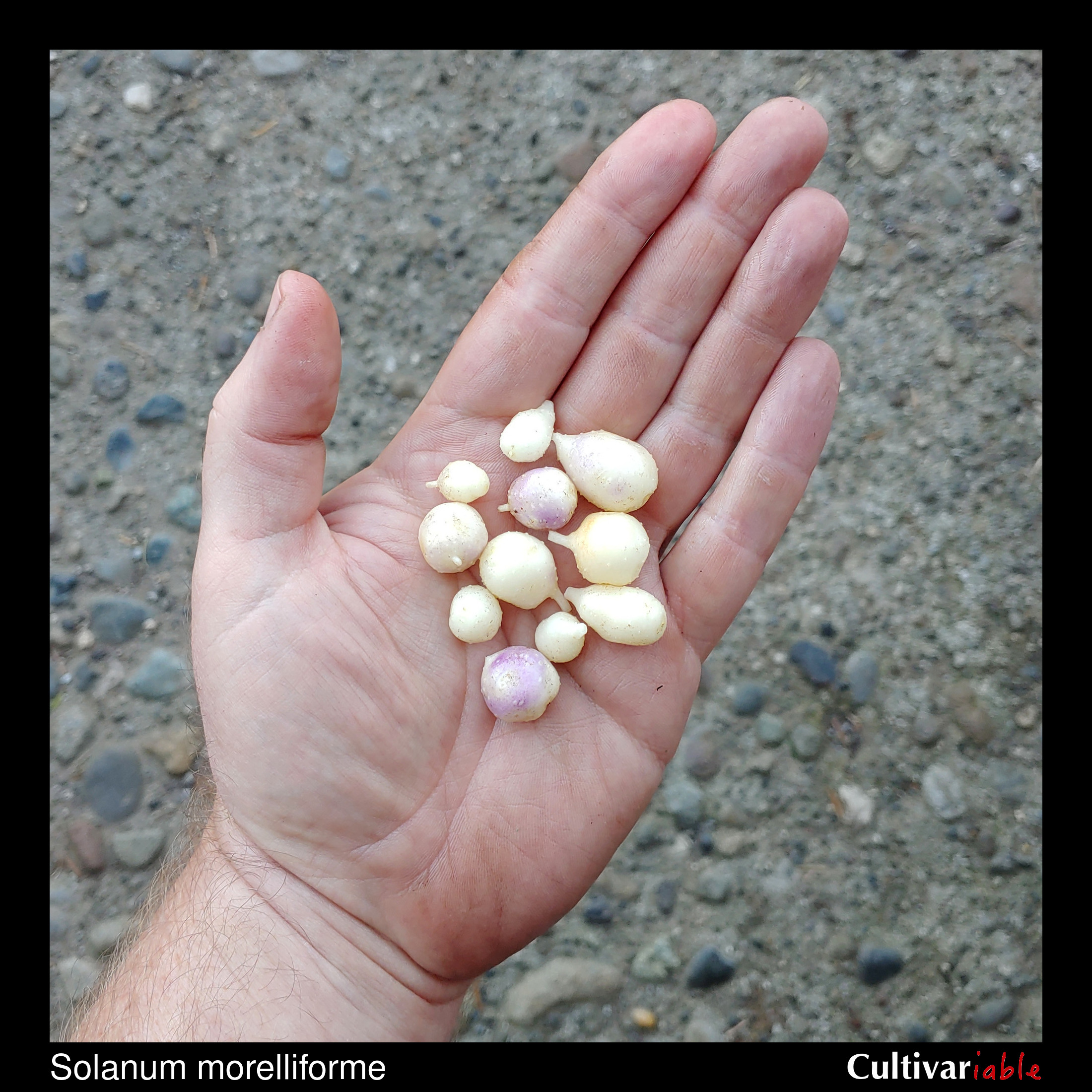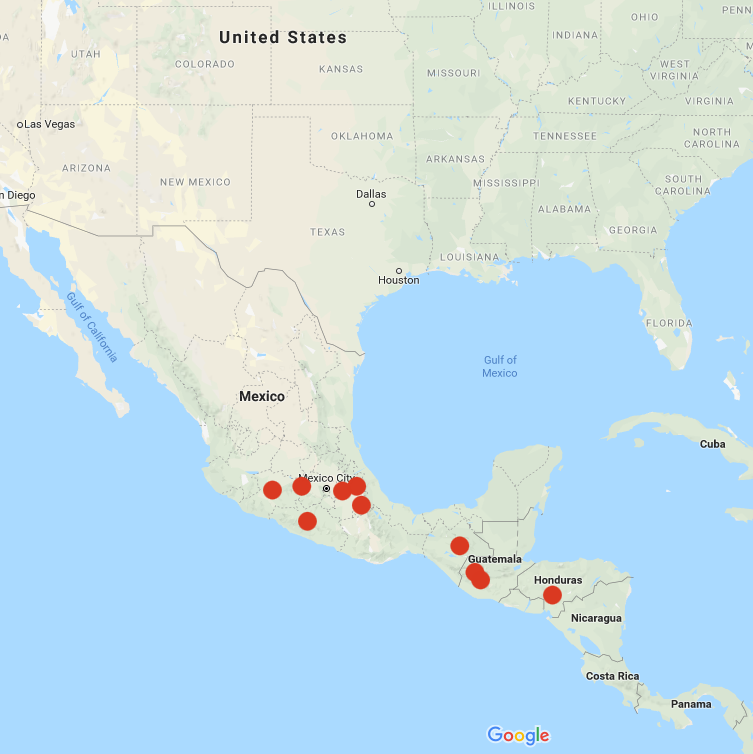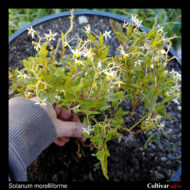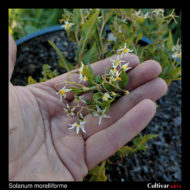No products in the cart.
Solanum morelliforme

| Common Names | |
| Code | mrl |
| Synonyms | |
| Clade | 1 |
| Series | Morelliformia |
| Ploidy | Diploid (2x) |
| EBN | 1 |
| Tuberization Photoperiod | Short Day |
| Self-compatibility | No |
| Nuclear Genome | B |
| Cytoplasmic Genome | W |
| Citation | Bitter & Muench: Repert. Spec. Nov. Regni Veg. 12: 154. 1913. |
Description

Solanum morelliforme is a contender for the most unusual wild potato, as it is an epiphyte, typically growing on or near oak and pine trees. This is a widespread species in central Mexico and extends south into Honduras. Plants grow from about 3 to 18 inches tall. The berries are very small – about 1/4 to 1/3 of an inch in diameter and contain only 5 to 15 seeds, much less than most potato species.
The specific epithet, morelliforme, refers to a similarity in appearance to S. nigrum, which was once known as black morel. While there is no completely standardized pronunciation for scientific names, the most common way to pronounce this species is probably so-LAY-num mor-el-ih-FOR-mee.
A disjuct (geographically separated) population of S. morelliforme was discovered in Bolivia in 2010 (Simon 2011). This is very surprising considering that there is a 2500 mile gap between the North and South American populations. No other wild potato species has a natural distribution on both continents.
This species can survive frosts down to 26 degrees F (-3.5 C) (Li 1977). Vega (1995) found that this species is less frost tolerant than domesticated potato and was among the least tolerant of the wild potato species.
Resistances
| Condition | Type | Level of Resistance | Source |
| Frost | Abiotic | Somewhat Resistant | Machida-Hirano 2015 |
| Leptinotarsa decemlineata (Colorado Potato Beetle) | Invertebrate | Somewhat Resistant | Machida-Hirano 2015 |
| Phytophthora infestans (Late Blight) | Fungus | Somewhat Resistant | Machida-Hirano 2015 |
| Phytophthora infestans (Late Blight) | Fungus | Some resistance | Karki 2020 |
Glykoalkaloid content
No information is available about glycoalkaloid content, but it is typically low in diploid North American species. I tasted one small tuber and detected no bitterness.
Images
 |  |  | |
Cultivation
Bamberg (2018) found that germination of at least some accessions of this species is inhibited by alternating temperatures. I reproduced that quite successfully, as we got zero germination from seeds sown under our standard 65 F day / 50 F night temperature alternation. I tried again at constant temperature and got a little germination, but still not as much as expected.
I have found plants quite difficult to keep alive outdoors.
Breeding
Crosses with S. tuberosum
| Female | Male | Berry Set | Seed Set | Germination | Ploidy | Source |
Crosses with other species
Watanabe (1991) found that 8.1% of varieties of this species produced 2n pollen, which would be effectively tetraploid and probably 2EBN.
| Female | Male | Berry Set | Seed Set | Germination | Ploidy | Source |
